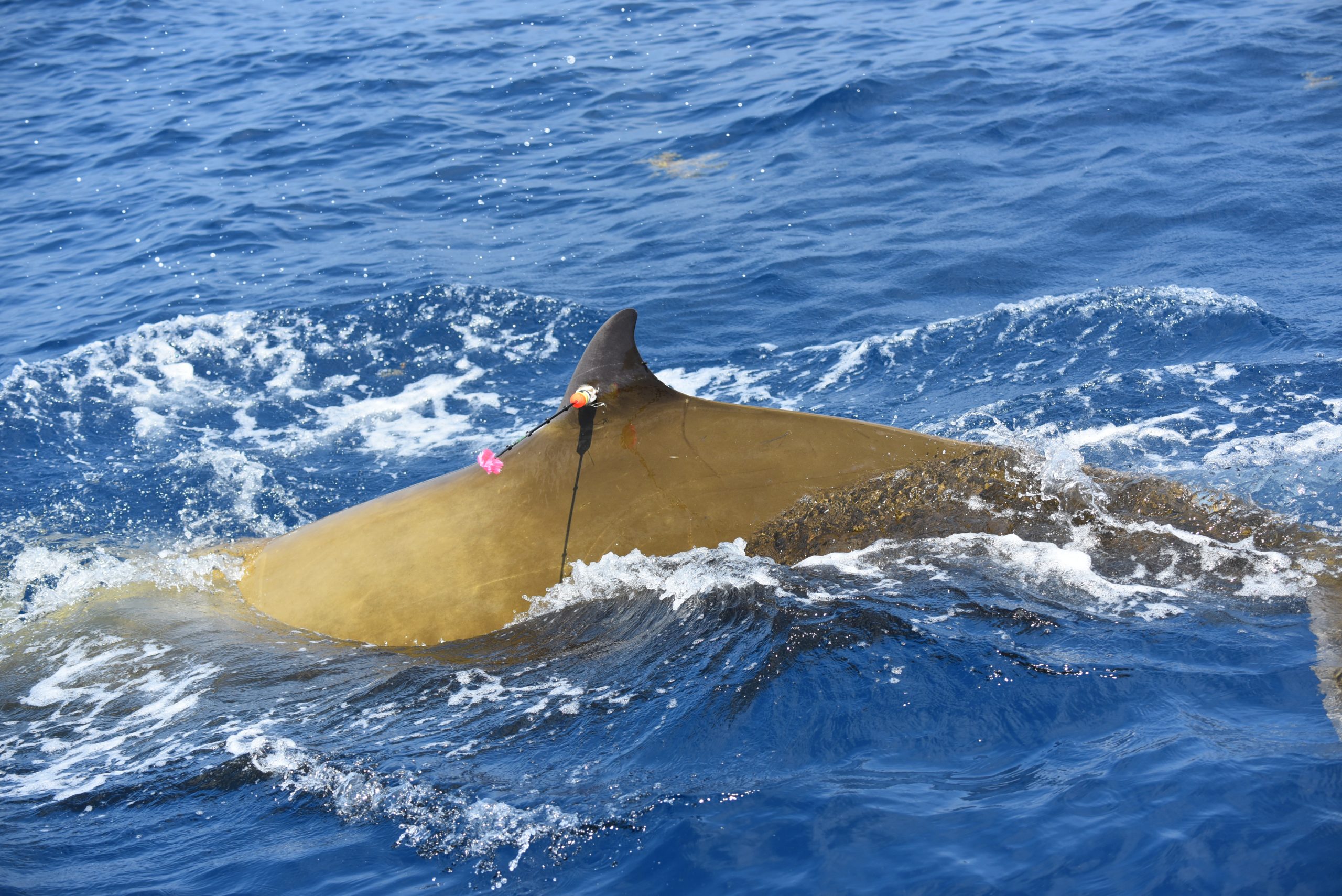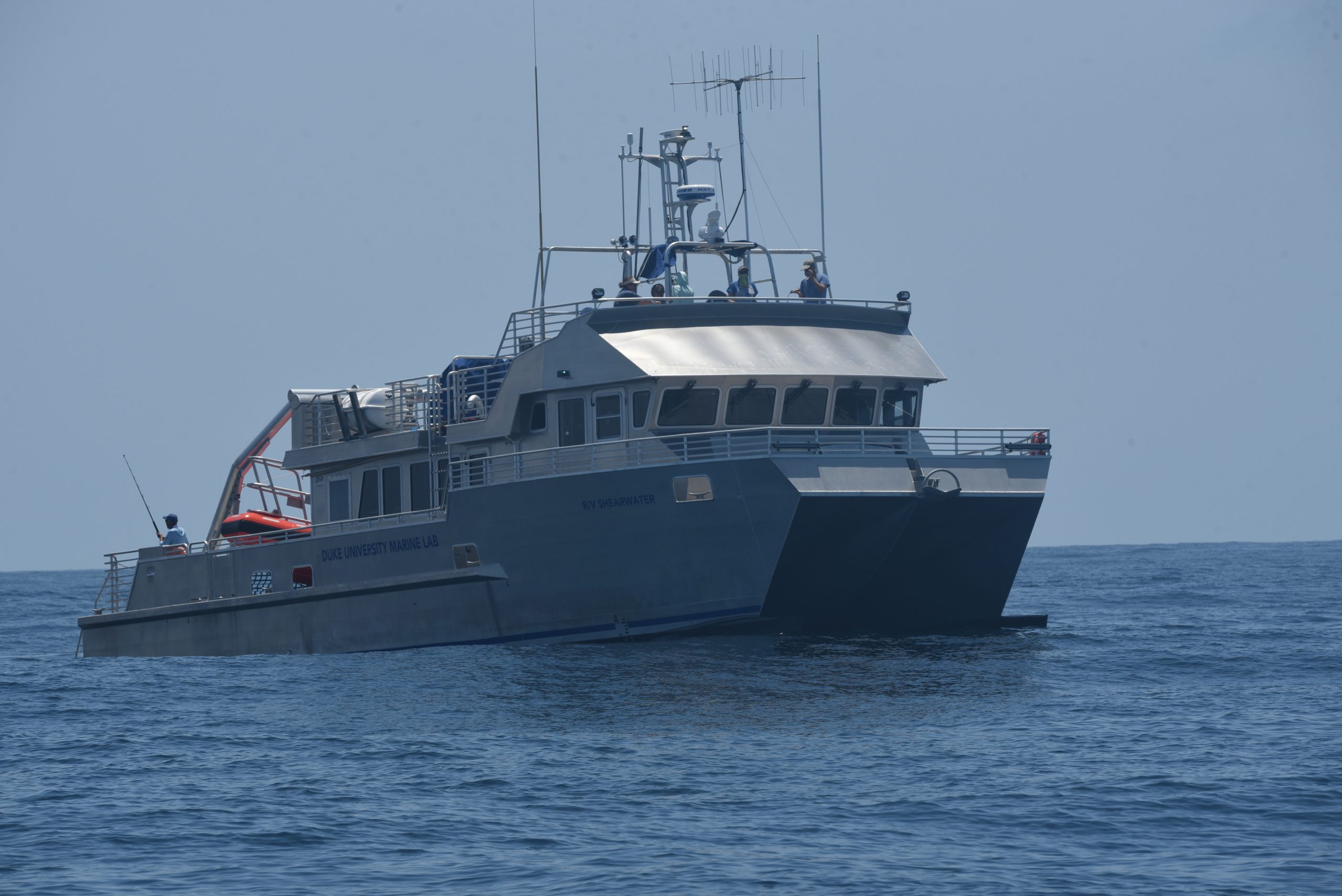On July 30, we conducted a successful Controlled Exposure Experiment (CEE) with thirteen satellite-tagged Cuvier’s beaked whales Ziphius cavirostris, off Cape Hatteras. These whales were exposed to Mid-Frequency Active Sonar (MFAS) signals in a highly controlled experimental setting. The MFAS signals were produced by the USS Farragut, a guided missile destroyer based in Norfolk, Virginia.

CEEs are amongst the most challenging field experiments to conduct. The first step is to equip whales with tags that record dive behavior and movement. In this experiment, we employed satellite-linked dive recorders that transmit data to orbiting satellites. We tagged the whales well ahead of the CEE, allowing us to collect extensive baseline data on movements and diving behavior several weeks prior to the experiment.

To monitor the behavior of the whales in real time during the experiment, we used the Duke University’s Research Vessel Shearwater. Despite strong winds and high seas, we were able to locate three focal tagged whales the day prior to the experiment and follow them during and after the exposure.

To ensure that the focal whales received sonar signals that were audible, but not loud enough to cause harm, we conducted real-time acoustic propagation modeling that allowed us to predict the sound levels received by the whales. We confirmed these predicted sound levels by deploying an acoustic recorder near the whales during the experiment. We then requested the Farragut to move to a specific location, some distance from the whales, and to initiate the MFAS signals. The spatial spread of the tagged whales ensured that they received a variety of received levels, ranging from our target levels for the closest, focal whales, to very low levels for the whales farthest from the Farragut.

The three focal whales all responded to the MFAS by making long dives and moving away from the Farragut. This is very consistent with the responses we have seen in previous CEES, using both real and simulated sonar signals. We are continuing to monitor the tagged whales more than a week after the experiment to understand their longer-term response to the exposure.

The experiment required a high degree of precise co-ordination and communication with the USS Farragut. We are grateful to the officers and crew of the Farragut and to our Navy colleagues who made this co-ordination so effective. You can read more about the Navy side of this experiment here. We are also grateful for the skill and hard work of the Captain and crew of the Shearwater.




